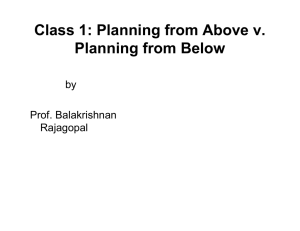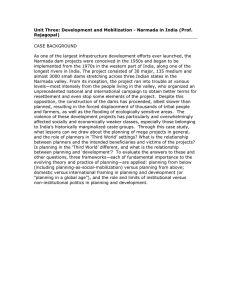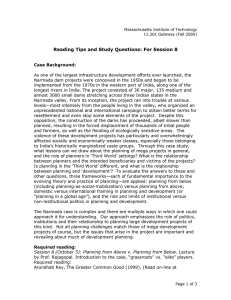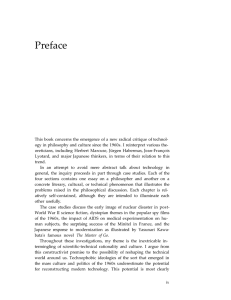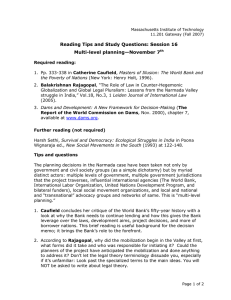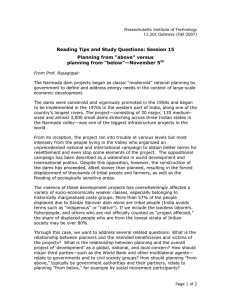Unit Three: Development and Mobilization Narmada in India Professor Balakrishnan Rajagopal
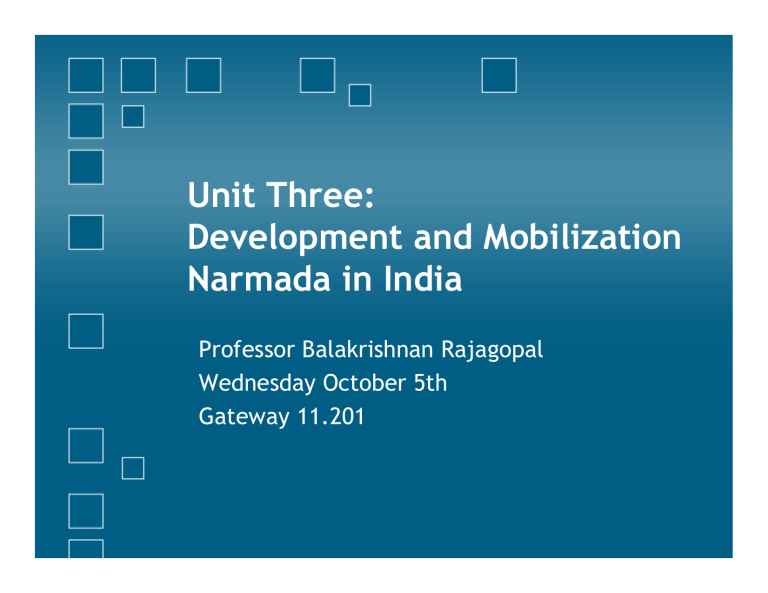
Unit Three:
Development and Mobilization
Narmada in India
Professor Balakrishnan Rajagopal
Wednesday October 5th
Gateway 11.201
“Drowned Out” Screenings
SCREENING ONE:
DATE: Wednesday, October 5, 2005
TIME: 7:30 p.m. - 9:00 p.m.
SCREENING TWO:
DATE: Thursday, October 6, 2005
TIME: 7:00 p.m. - 8:30 p.m.
Class 1: Planning from Above v.
Planning from Below
1. Background and History:
• Of India: societal structure and the role of tribals and dalits; caste system; state system and division of responsibilities over river basins; the Narmada valley
• Of development: as ideology; modernity; nationalism; exploitation; technocracy; development and link to colonialism
• Of planning: City and National Planning; contrast
American tradition; Planning in a global age
• Of dams: Their growth during the 20th century
• Project background: History; question of who is
‘project-affected’; question of land ownership and title and their link to resettlement and rehabilitation.
(cont.’) Class 1: Planning from
Above v. Planning from Below
2. Planning from above:
•
Institutions – inter-State structure
• As technocracy: hydrology and engineering; benefit-cost analysis and post-project evaluation
• As democracy: defining ‘national interest’; what is the unit of democracy, of demos, of self-determination?
(cont.’) Class 1: Planning from
Above v. Planning
3. Planning from below:
• As a critique of democracy: the rise of social movements – new v. old movements; crisis of Emergency and its impact; NBA as a NSM?
• As a critique of modernity: how to be modern and different (Calderon);
• As a critique of technocracy: indigenous knowledge and public speech through protest.
